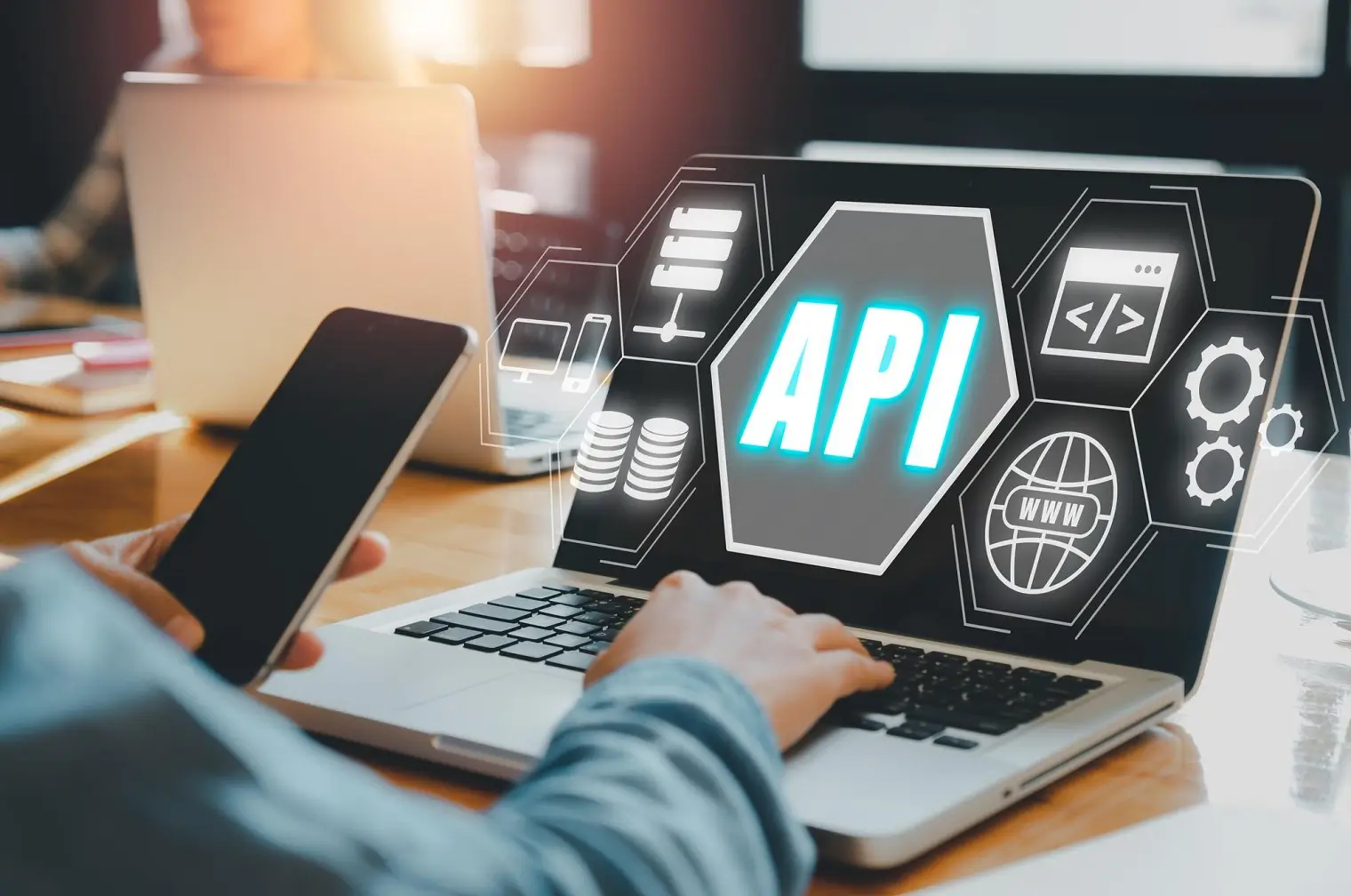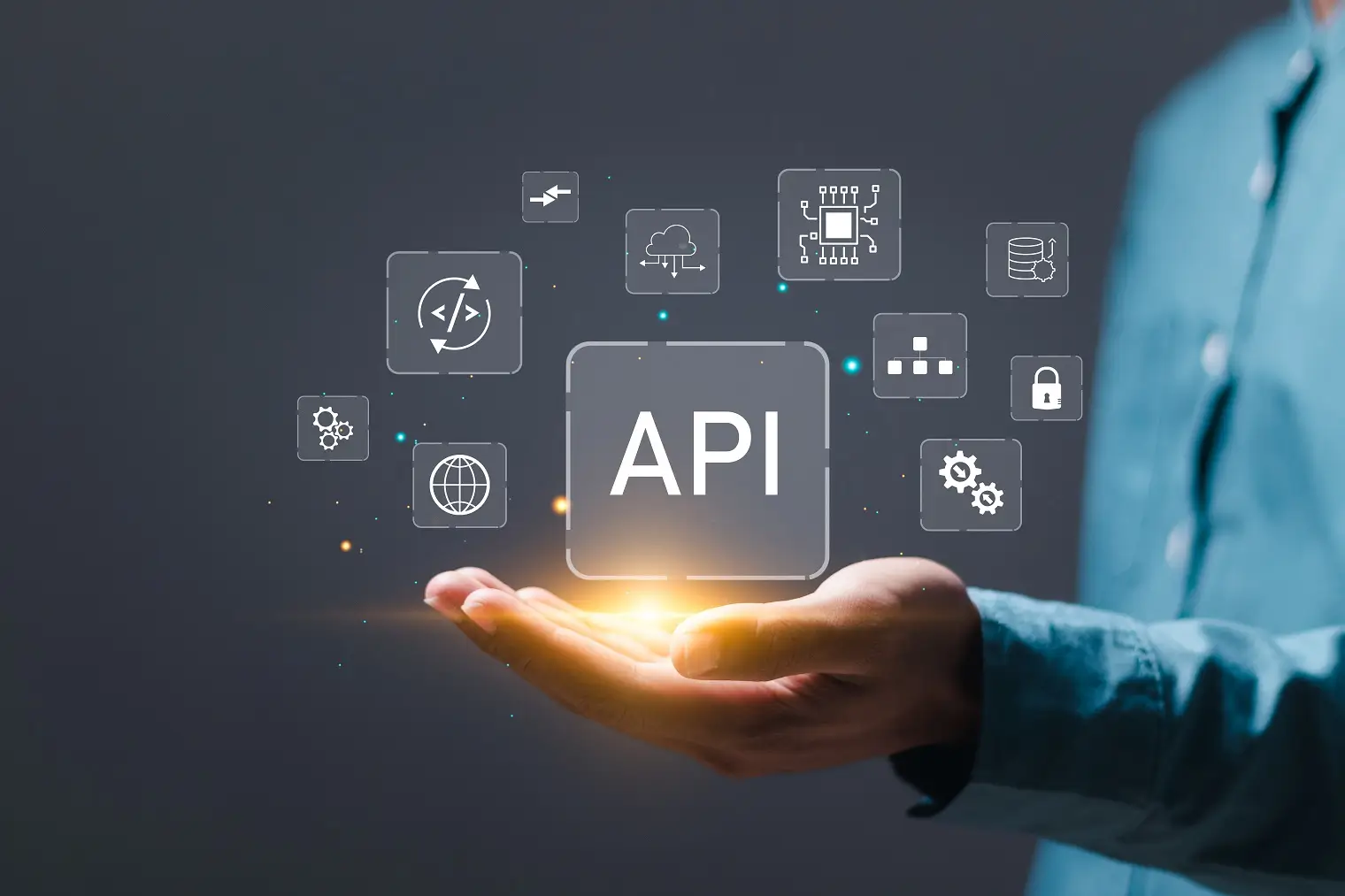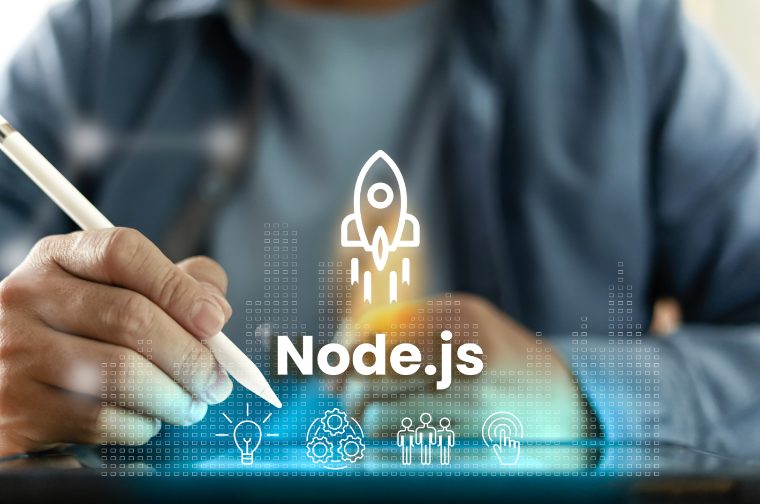Machine Learning and AI for revolution of Tech Companies are changing and streamlining businesses.
GraphQL and Node.js are transformative technologies in modern API development, offering a powerful combination of flexibility and performance. GraphQL, a query language developed by Facebook, allows clients to request the data they need and nothing more. This approach reduces over-fetching and under-fetching issues common in traditional REST APIs, making data retrieval more efficient. By enabling a single request to handle complex queries, GraphQL streamlines communication between the client and server, improving both performance and user experience, particularly in data-intensive applications.
Node.js, built on Chrome’s V8 JavaScript engine, is a runtime environment designed for building scalable and high-performance applications. Its non-blocking, event-driven architecture is ideal for handling asynchronous operations, making it well-suited for APIs that demand speed and reliability. When paired with GraphQL, Node.js enables developers to create APIs that are highly adaptable, fast, and capable of handling modern data requirements. Let’s look at the details in our blog.
GraphQL Overview
GraphQL was introduced to address the limitations of traditional REST APIs, which often require multiple requests to fetch related data. This leads to issues of over-fetching or under-fetching. With GraphQL APIs, clients can request exactly what they need in a single query, reducing the amount of data sent over the network. This not only makes applications more efficient but also enhances performance. Additionally, GraphQL npm packages make it simple to integrate and manage API layers in Node.js environments. The schema-driven approach of GraphQL APIs ensures a clear contract between the client and server, making it easier to evolve and self-document.
Node.js Overview
Node.js GraphQL integration enables developers to create flexible, scalable back-end systems. Node.js allows developers to build Node APIs with its non-blocking, event-driven architecture, making it perfect for applications that require real-time capabilities, such as live data feeds or chat applications. Additionally, developers can easily create APIs in Node.js to handle data-intensive tasks efficiently, leveraging the power of GraphQL queries to manage large datasets in an optimal manner.
READ: Enhance Node.js API Performance with 8 Effective Techniques
Why GraphQL and Node.js Complement API Development
GraphQL and Node.js combine to improve API development in several ways:
- Efficient Data Fetching: GraphQL queries fetch complex data structures in one request, aligning with Node.js’s asynchronous capabilities. This reduces server roundtrips and boosts performance.
- Flexibility and Customization: GraphQL APIs allow clients to shape the response, ideal for mobile apps with limited bandwidth. Node.js complements this with its ability to handle varied data sources efficiently.
- Real-Time Capabilities: GraphQL subscriptions and Node.js’s event-driven model enable real-time updates, perfect for applications needing live data.
- Strong Ecosystem: GraphQL npm packages like Apollo Server and Express-GraphQL make integration with Node.js GraphQL simple, streamlining development.
- Scalability: The lightweight architecture of Node.js and the efficient data retrieval of GraphQL and Node.js allow developers to build scalable APIs in Node.js that handle high loads seamlessly.
Streamline Your APIs with GraphQL and Node.js
Unlock seamless performance for your business with ViitorCloud’s expert Node.js Development Services and cutting-edge API Development solutions.
What is GraphQL?
GraphQL is a powerful query language and runtime for APIs, allowing clients to request data in a flexible and efficient way.
Developed by Facebook, it offers key features:
- Schema: Defines the data structure, acting as a contract between the client and server.
- Types: Represent data that can be fetched, like Object, Scalar, Enum, Interface, and Union.
- Query: Clients use GraphQL queries to specify the data they need from the API.
- Mutation: Used to create, update, or delete data on the server.
- Resolver: Server functions that fetch data for specific fields in the schema.
Differences Between GraphQL and REST APIs
Here are the key differences between GraphQL and REST APIs, and understanding why these distinctions matter for your development projects.
- GraphQL APIs use one endpoint for all data, while REST requires multiple endpoints for different data types.
- GraphQL queries allow clients to request only the data they need, avoiding over-fetching or under-fetching, unlike REST, which returns fixed structures.
- GraphQL uses a strong type of system defined in its schema, whereas REST lacks formal data shape specifications.
- GraphQL queries are hierarchical and nested, while REST relies on simple URLs to access data.
- GraphQL employs a query language for data requests, while REST uses HTTP methods like GET, POST, PUT, and DELETE.
Benefits of Using GraphQL
Here are the advantages of adopting GraphQL for your projects:
- Flexibility: GraphQL APIs let clients request precise data, optimizing bandwidth and performance.
- Efficiency: Multiple GraphQL queries can be combined into a single request, minimizing network latency.
- Scalability: GraphQL and Node.js APIs evolve easily by adding fields without disrupting existing clients.
- Strong Typing: GraphQL’s schema provides a clear contract, making APIs self-documenting.
- Reduced Development Time: GraphQL simplifies data fetching, speeding up the process of building Node.js APIs efficiently.
Build Scalable APIs with GraphQL and Node.js
Empower your business with high-performing, scalable APIs developed by our experienced team. Transform your ideas into reality with API Development Services tailored to your needs.
Why Use Node.js with GraphQL?
Node.js is an excellent choice for building APIs, especially when combined with GraphQL.
Here’s why:
Node.js as a Backend for APIs
Node.js excels at building Node.js APIs due to its key advantages:
- High Performance: Node.js is built on Chrome’s V8 engine, offering speed and efficiency. Its non-blocking I/O model handles multiple concurrent connections without blocking the event loop.
- Scalability: The event-driven architecture and small memory footprint make Node.js highly scalable, and ideal for managing large data volumes and high traffic.
- Productivity: Node.js supports faster development with its vast ecosystem of libraries, making it easy to build APIs in Node.js and use JavaScript on both the client and server.
- Cost-effectiveness: Node.js efficiently uses system resources, reduces hosting costs, and scales horizontally with load balancing.
Seamless Integration with GraphQL
Node.js complements GraphQL to create efficient, scalable APIs:
- Event-driven model: Node.js’s asynchronous architecture pairs well with GraphQL queries and resolver functions for efficient data handling.
- Non-blocking I/O: This model allows Node.js to process GraphQL queries concurrently, maximizing performance.
- Real-time capabilities: Combining Node.js with GraphQL subscriptions enables real-time applications like live data feeds.
npm Ecosystem Support
The Node.js ecosystem offers strong support for GraphQL APIs:
- graphql npm package: Provides core functionality for building a GraphQL schema and executing queries.
- Express-GraphQL: Easily integrates GraphQL and Node.js into an Express server.
- Apollo Server: A complete GraphQL server that works with any Node.js framework.
- Prisma: A database toolkit that integrates smoothly with Node.js ****GraphQL APIs.
Node.js’s performance, scalability, and rich ecosystem make it an ideal choice for creating GraphQL APIs.
ALSO READ: Building Scalable APIs with Node.js & Express
How to Build an API with Node.js and GraphQL
Building an API with Node.js and GraphQL involves several key steps:
1. Set up a Node.js project
- Install Node.js and npm (Node Package Manager) on your system.
- Create a new directory for your project and initialize a new npm package using npm init.
2. Install necessary dependencies
- Install the required packages: express, graphql, and express-graphql.
npm install express graphql express-graphql- Install additional packages like Cors for handling cross-origin requests.
3. Create an entry point file
- Create a new file, e.g., server.js, which will serve as the entry point for your API.
4. Import dependencies and set up Express
- Import the installed packages at the beginning of server.js:
const express = require('express');
const graphqlHTTP = require('express-graphql');
const graphql = require('graphql');- Create an Express app instance and configure it to use the GraphQL middleware:
const app = express();
app.use('/api', graphqlHTTP({
schema: schema,
graphiql: true,
}));5. Define the GraphQL schema
- Use the buildSchema function from the graphql package to define your schema.
- Specify the types, queries, and mutations in the GraphQL schema language.
- Create resolver functions to handle the queries and mutations.
6. Set up the GraphQL server
- Create a new GraphQLSchema instance using the defined schema.
- Start the Express server and listen for incoming requests:
app.listen(4000);
console.log('GraphQL server running on port 40007. Test the API
- Run the server using node server.js.
- Open a web browser and visit http://localhost:4000/api to access the GraphiQL IDE.
- Use GraphiQL to explore the schema and run queries on the API.
ALSO SEE: Build Smart AI Chatbots with Node.js and NLP Technology
Enhance Your API Development with Experts
Discover the perfect blend of GraphQL and Node.js to create robust, efficient APIs. Let ViitorCloud take your API Development to the next level.
Querying a GraphQL API
GraphQL queries allow clients to request specific data, making data retrieval more efficient compared to REST. Here’s how GraphQL queries work and how to write and test them for a Node.js API.
How GraphQL Queries Work
- Structure: GraphQL queries use a flexible syntax similar to JSON. Clients specify fields within curly brackets, defining a tree structure that mirrors the expected response, ensuring they only retrieve the data they need.
- Operations: Consists of two types, first is Queries, which fetch data similar to GET requests in REST, and second is Mutations, which modify data like POST, PUT, or DELETE in REST.
- Response: The server responds with a JSON object matching the query’s structure, preventing over-fetching and under-fetching—common issues in traditional REST APIs.
Writing GraphQL Queries for a Node.js API
To write and test GraphQL queries for a Node.js API, follow these steps:
- Define the Query: Start by defining a query that specifies the fields you want to retrieve. For example, if you want to fetch user data, your query might look like this:
query {
user(id: 1) {
name
email
}
}- Using a GraphQL Playground: Many GraphQL APIs provide a playground (like GraphiQL or Apollo Studio) where you can write and test your queries interactively. This environment allows you to see the schema, explore available types, and receive immediate feedback on your queries. You can input your query in the left panel and see the results on the right panel.
- Testing the Query: Once you have your query ready, execute it in the playground. The server will return a response that matches the structure of your query:
{
"data": {
"user": {
"name": "John Doe",
"email": "[email protected]"
}
}
}- Nested Queries: If you need to fetch related data, you can construct nested queries. For example, to get a user’s address along with their country details, you might write:
query {
user(id: 1) {
name
addresses {
street
country {
name
}
}
}
}- Using Variables: For more complex queries, you can use variables to dynamically pass parameters. This can enhance security and reusability:
query GetUser($userId: ID!) {
user(id: $userId) {
name
email
}
}You would then provide the variable value in the playground or client.
GraphQL queries provide a powerful method for interacting with APIs, enabling clients to request specific data. Using tools like GraphQL playgrounds, developers can easily write and test queries for a Node.js API, optimizing data management. The ability to fetch nested data in one request sets GraphQL apart from REST, making it a modern solution for API development.
Your API Success Starts Here
Leverage our expertise in GraphQL and Node.js to build APIs that drive results. Partner with ViitorCloud for innovative Node.js Development Services today.
Conclusion
Combining GraphQL with Node.js creates a powerful framework for building efficient and scalable APIs. GraphQL allows for precise data retrieval, enabling clients to request only the data they need. This approach eliminates issues of over-fetching and under-fetching, making it ideal for modern, data-heavy applications. Node.js enhances this combination with its event-driven, non-blocking architecture, which handles concurrent requests seamlessly, resulting in high performance and reliability.
ViitorCloud offers expert development services in Node.js and GraphQL to help businesses optimize their APIs for speed, scalability, and performance. Our team creates customized solutions that reduce latency, enhance efficiency, and integrate smoothly with your existing systems. Whether you need to build a new API or upgrade an existing one, we provide the necessary expertise to meet your needs. Get in touch with us today or connect with us on LinkedIn to transform your API development!
Frequently Asked Questions
GraphQL with Node.js offers efficient data fetching, flexibility, scalability, and real-time capabilities, making it ideal for modern API development.
ViitorCloud provides consulting, design, development, and optimization services to build scalable and efficient APIs using Node.js and GraphQL.
Consider data complexity, API evolution, ecosystem support, and the learning curve when deciding between GraphQL and REST.
ViitorCloud can guide you from the initial consultation to the final deployment, helping you set up your development environment, design the API architecture, build your API, and optimize it for performance and scalability.









